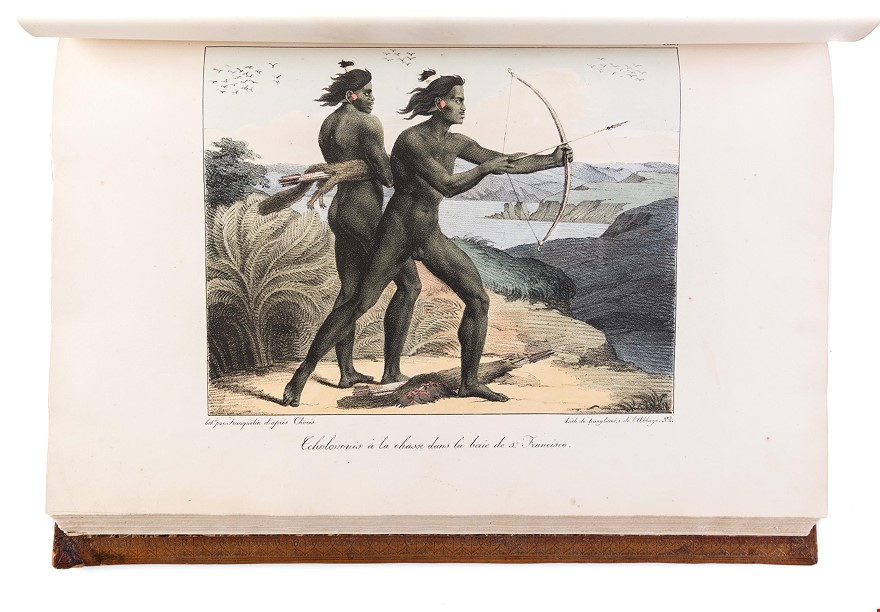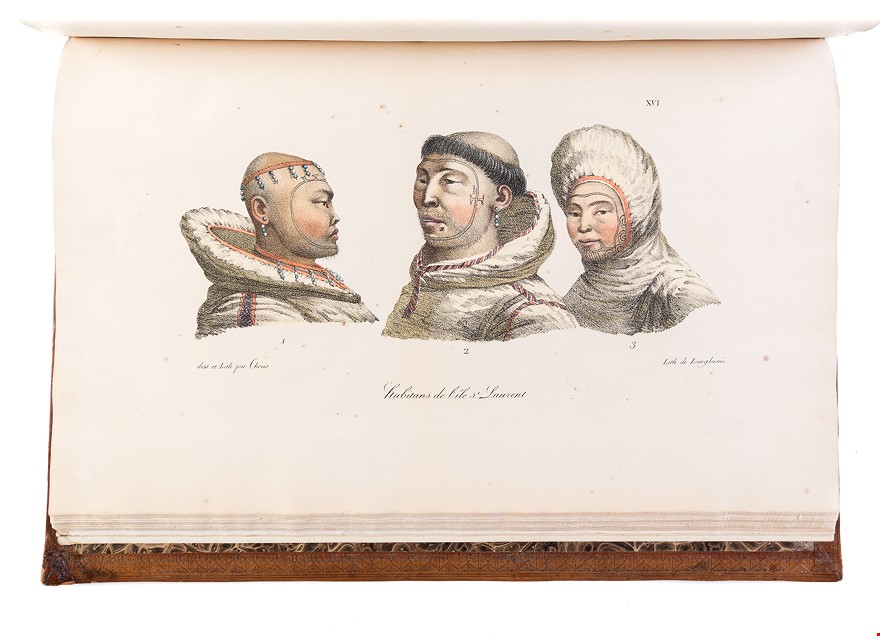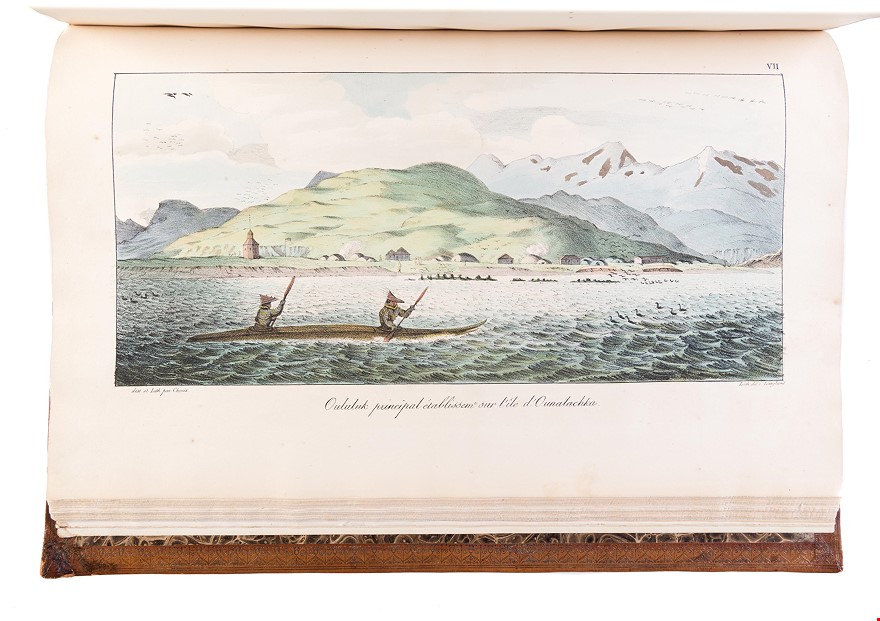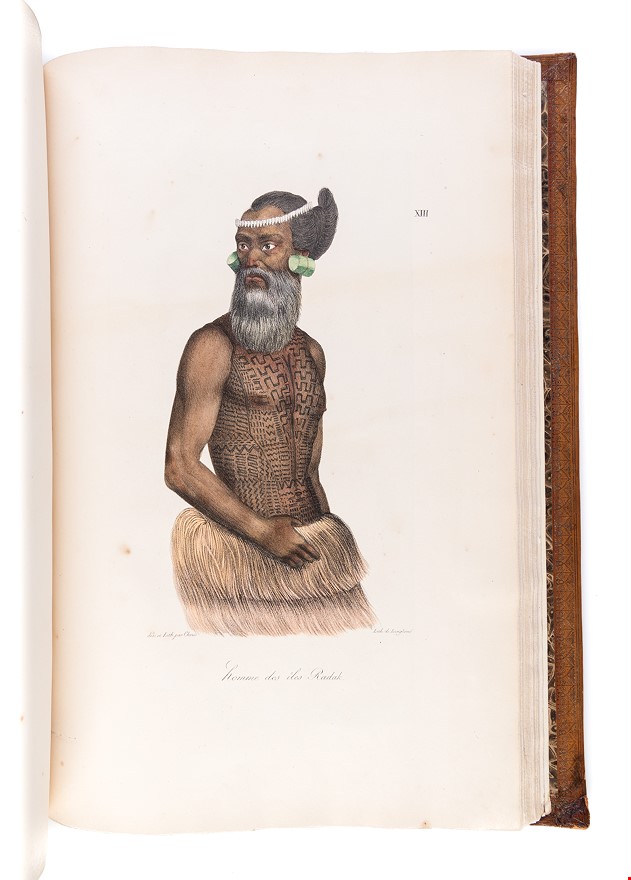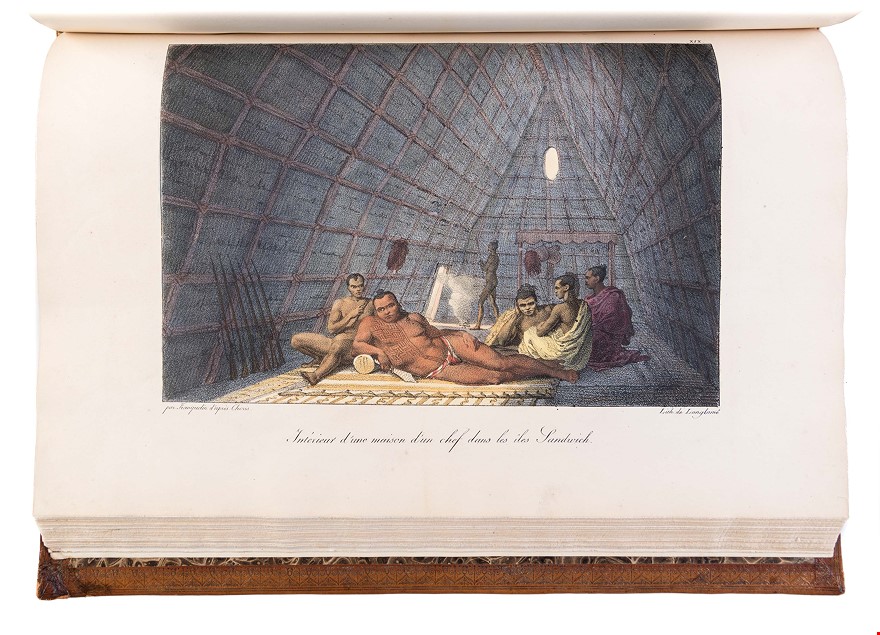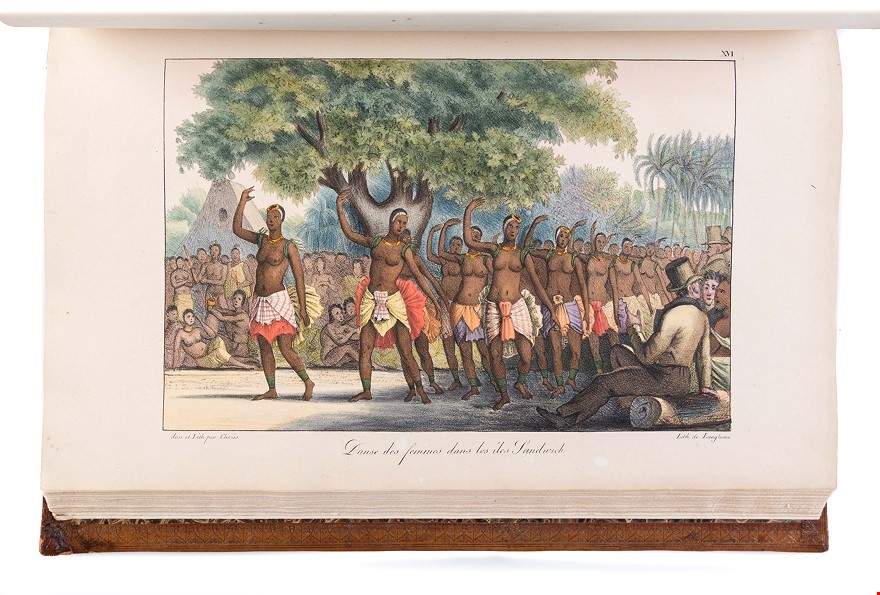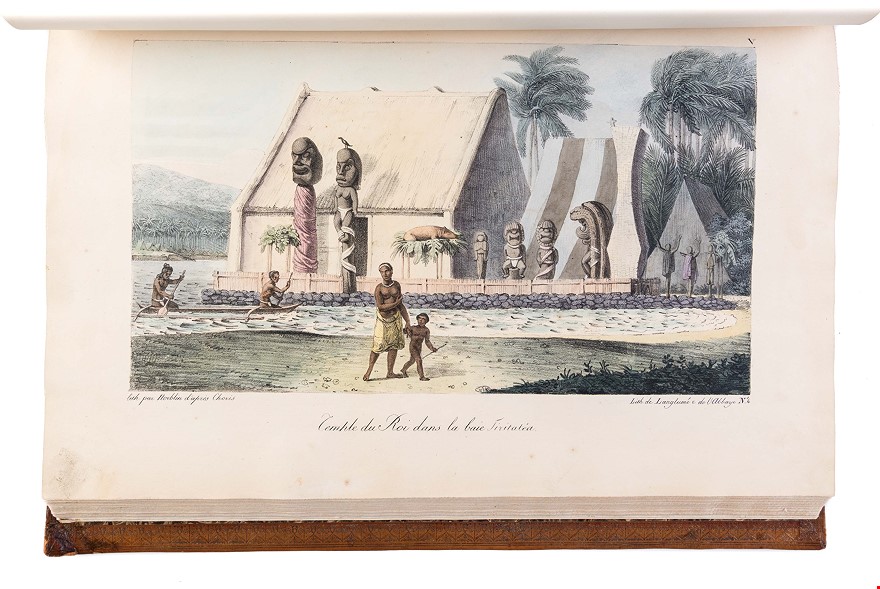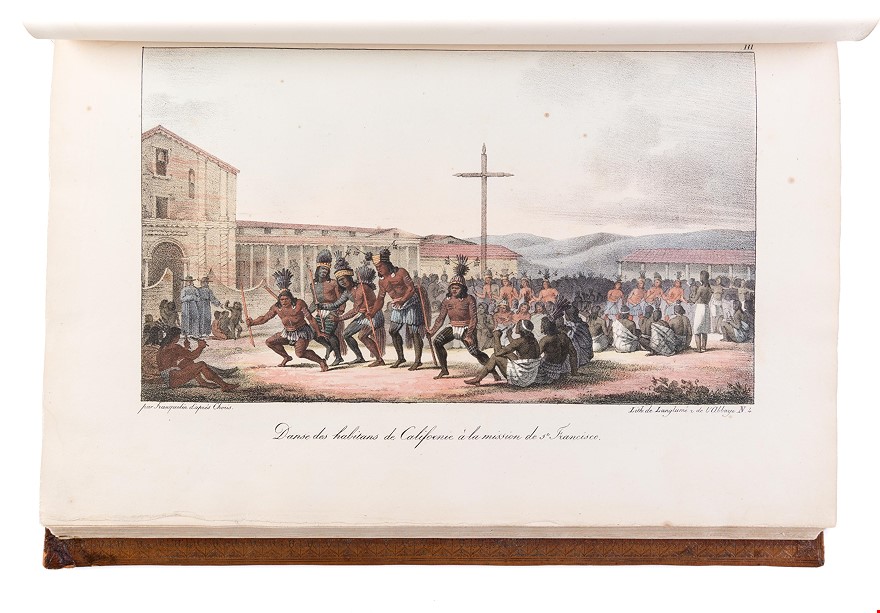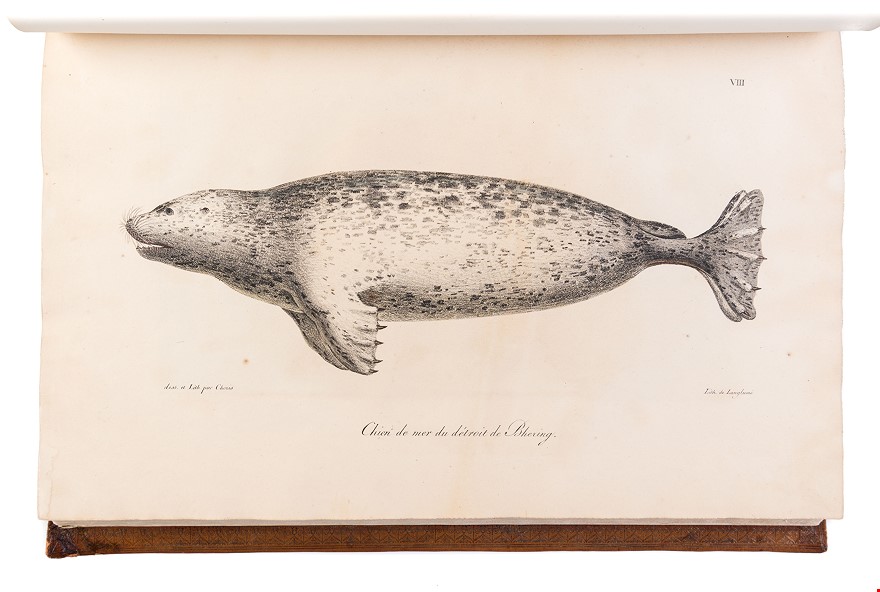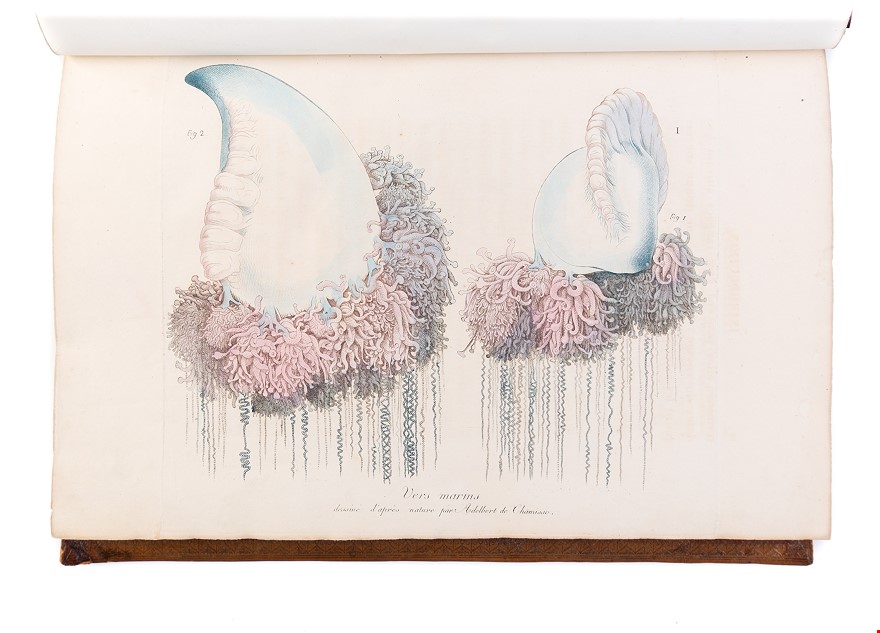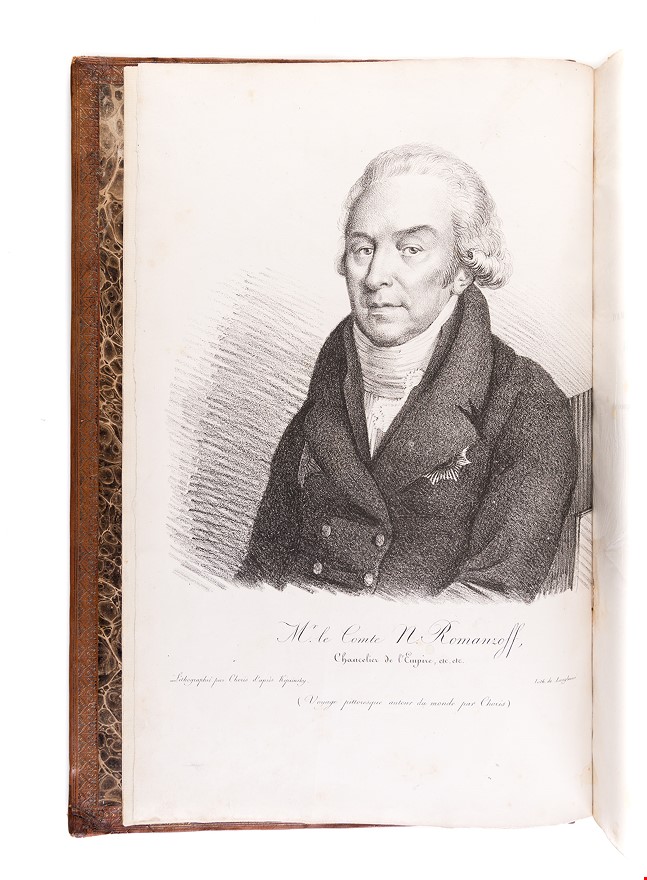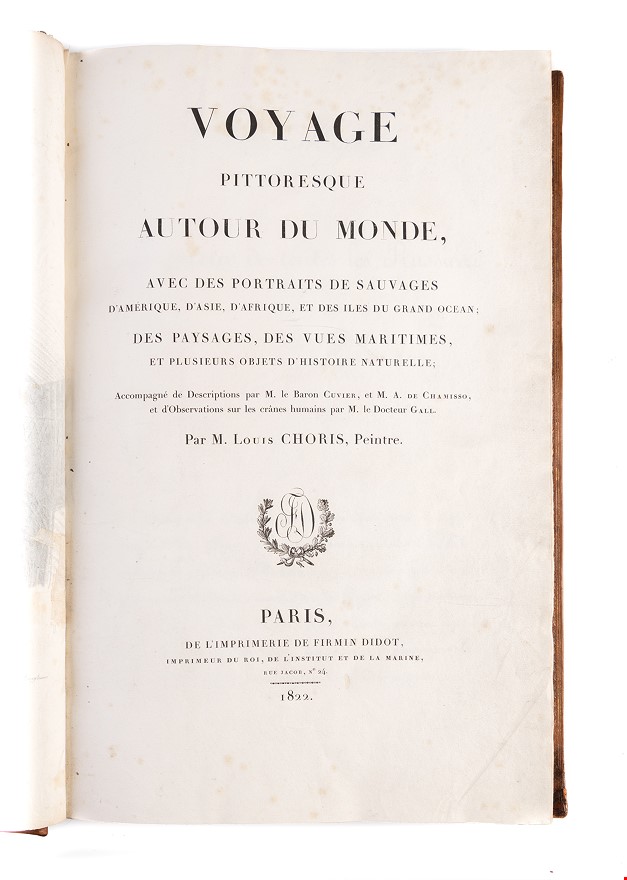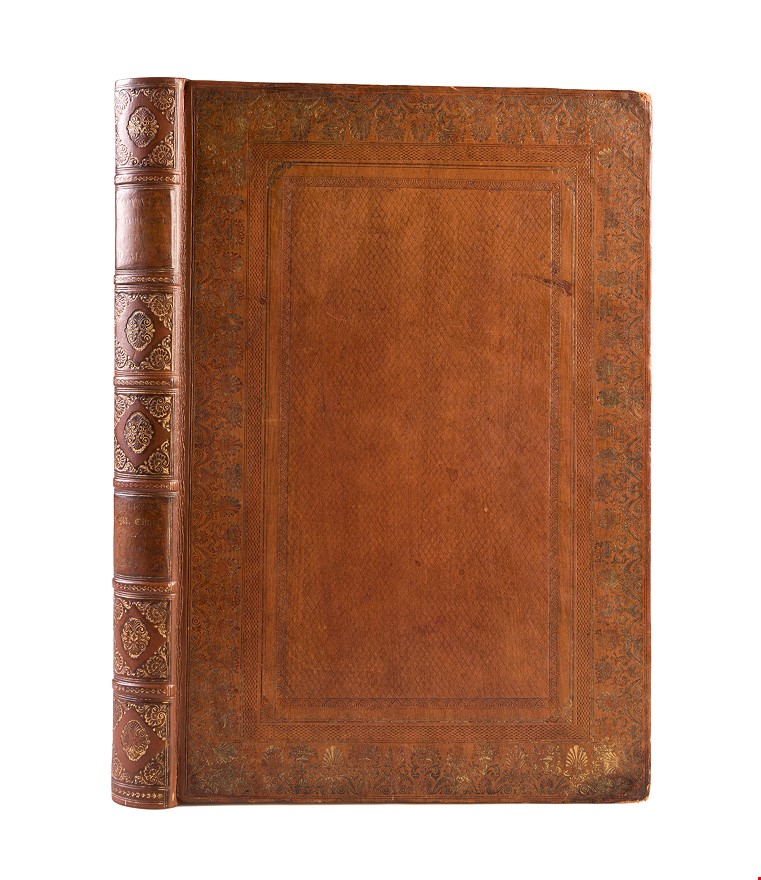Voyage Pittoreque autour du monde, avec portraits de sauvages d'Amerique, d'Asie, d'Afrique, et des iles du Grand Ocean...
CHORIS Louis (1822.)
£125000.00 [First Edition]
Please contact us in advance if you would like to view this book at our Curzon Street shop.
"THE GREAT COLORPLATE BOOK OF THE NORTH PACIFIC" (Forbes)
First edition. Rare coloured issue. 105 lithographed plates, folding map & 2 further maps printed on a single leaf. Folio. Contemporary diced calf with gilt border, rebacked, lightly worn, some toning and spotting to plates & pale dampstaining to final six, repaired tear to Fruit du Baquois (Marianas) plate, housed in a clamshell box. Paris, Imprimerie de Firmin Didot,
"One of the very valuable and fundamental works on Alaska, California, and the Hawaiian islands" (Lada-Mocarski).
Despite his relative youth, he was just twenty, Choris served as the official draughtsman on Otto von Kotzebue's expedition to the Pacific, 1815-18. He produced this vital record of the expedition, which includes substantial representations of California, Hawaii, and Alaska. It was published in 22 livraisons between 1820-22, and interestingly most of the images here were not included in the official account. This copy includes the list of subscribers and the final, preferred, variants of the dance at the mission in San Francisco; King Kamehameha; Queen Kaahmanu (spelling corrected to "Cahoumanou"); and the dance of the Hawaiian women.
Departing July 30 1815, they stopped at Teneriffe and the Cape Verde Islands, before rounding Cape Horn and onward to Easter Island. They discovered Romanzov (Tikei) and Penrhyn (Tongareva) Islands as well as the Radak and Ralik chains of the Marshall Islands. From there, they sailed to the North Pacific where the Rurik and Krusenstern Islands were discovered. They stopped at Kamchatka before heading north in July 1816 through the Bering Straight.
They spent nearly a month at Hawaii, allowing Kotzebue to recover from an injury before heading back to France. Forbes notes that the Hawaiian plates constitutes "a final and very beautiful pictorial examination of the Hawaiian Islands and of Hawaiian culture as it existed prior to the death of Kamehameha I in 1819, and prior to the abolition of the 'kapu' or feudal system following the king's death."
Forbes, 541; Hill, 290; Howes, C397; Howgego II, K20; Lada-Mocarski, 84; Sabin, 12884.
.
Stock Code: 228159
